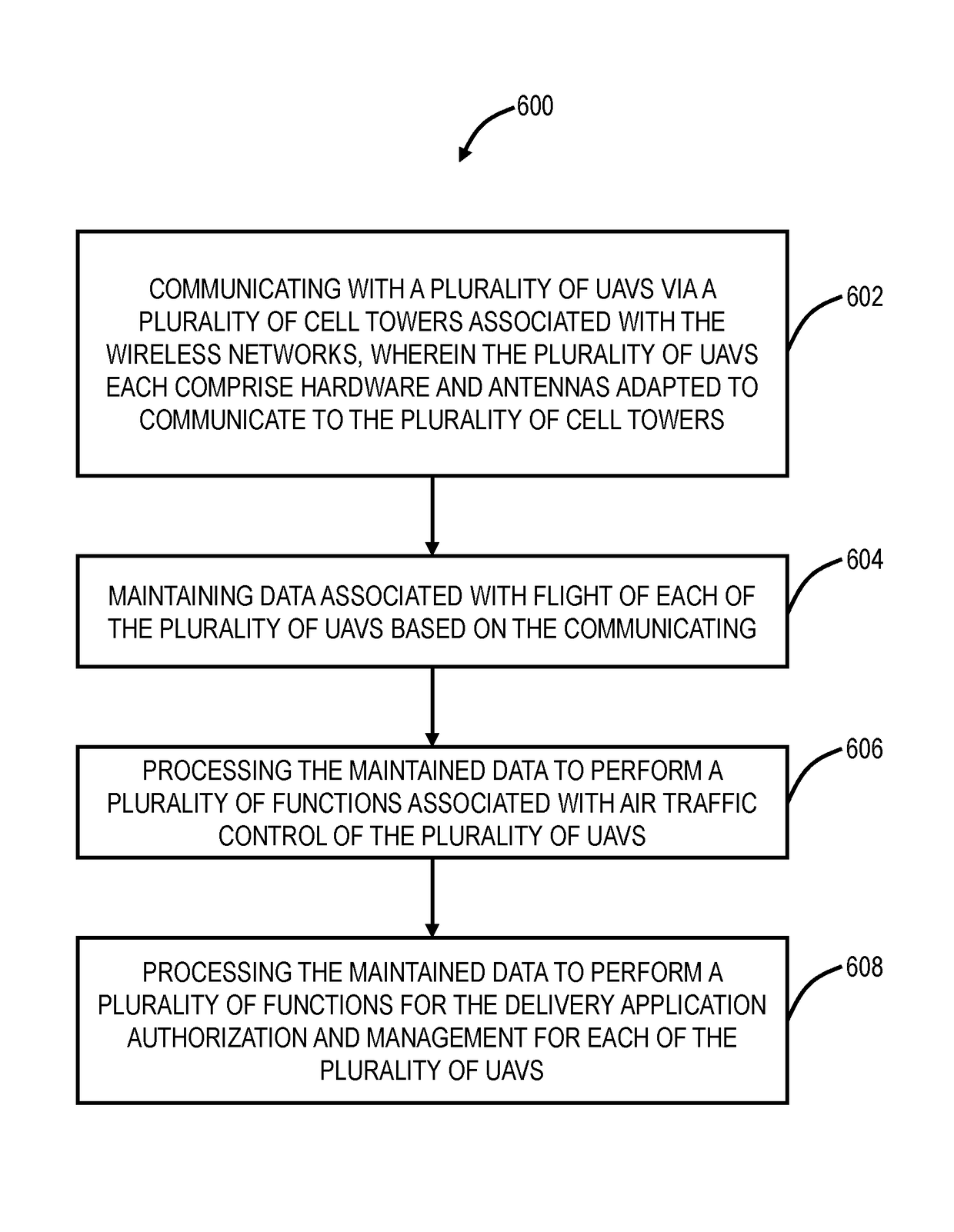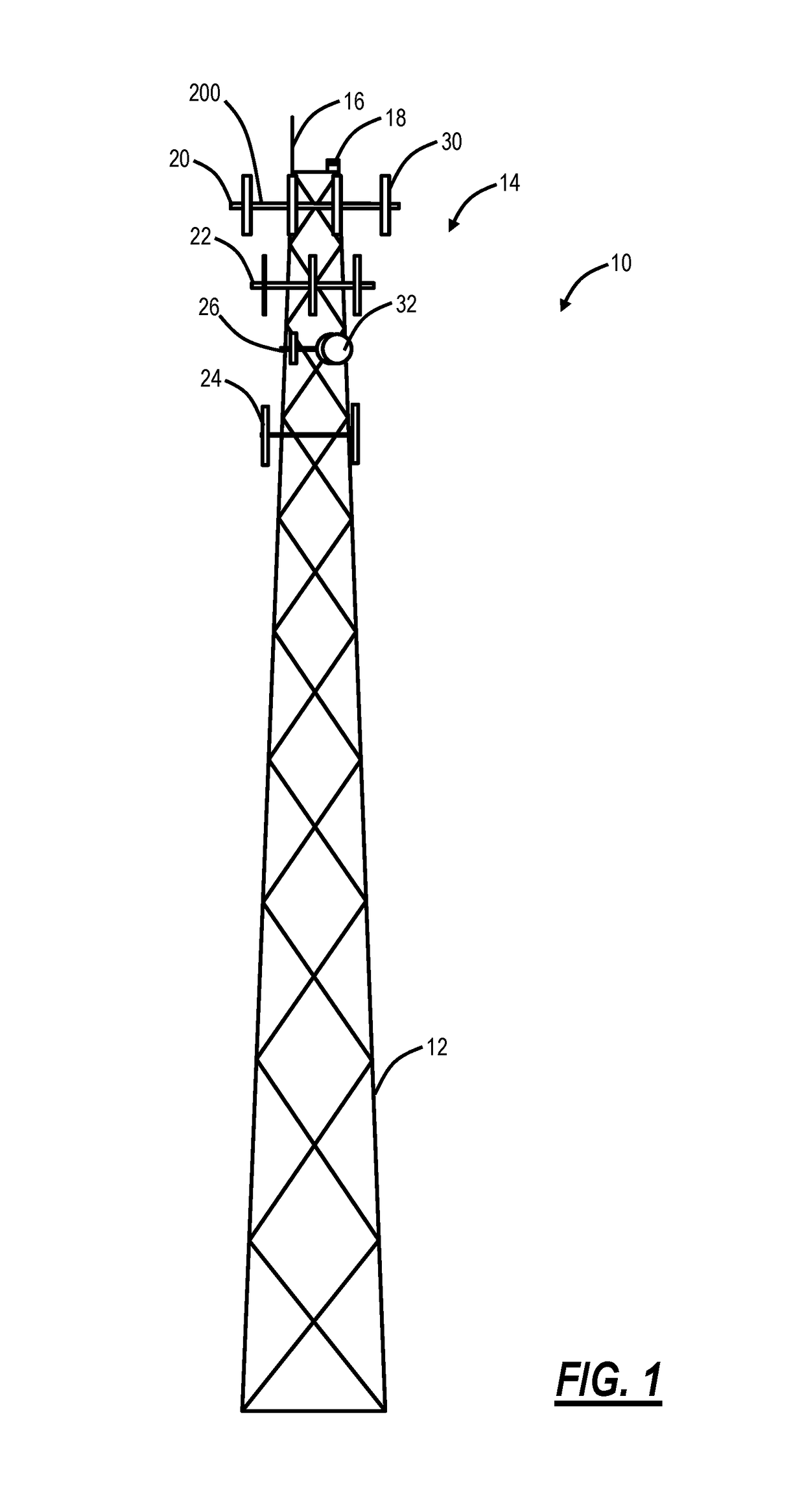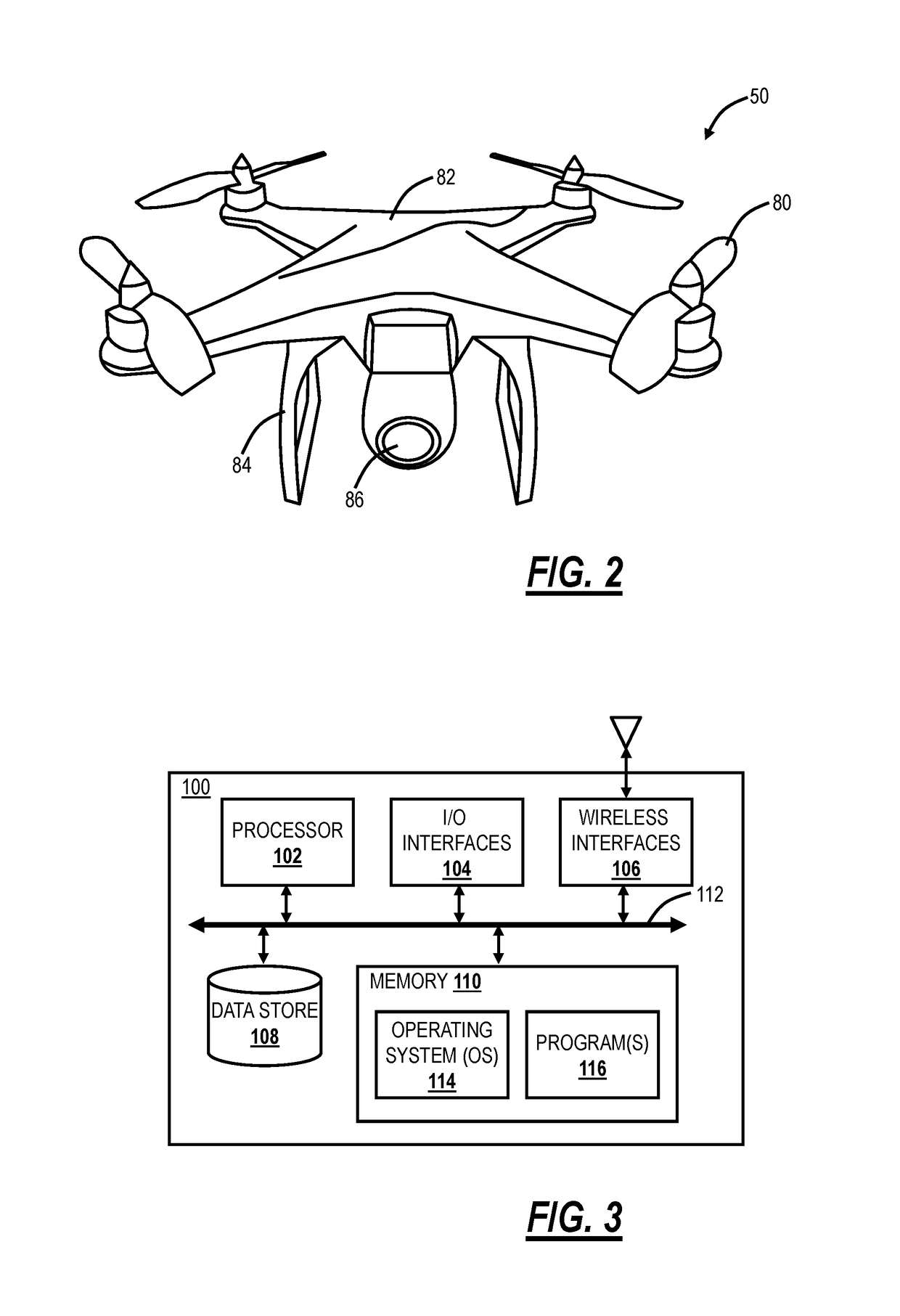Flying lane management systems and methods for unmanned aerial vehicles
a technology of flying lane management and unmanned aerial vehicles, applied in vehicle position/course/altitude control, process and machine control, instruments, etc., can solve the problems of collisions, impracticality of using the air traffic control network for uavs,
- Summary
- Abstract
- Description
- Claims
- Application Information
AI Technical Summary
Benefits of technology
Problems solved by technology
Method used
Image
Examples
Embodiment Construction
[0036]Again, in various exemplary embodiments, flying lane management systems and methods are described for UAVs such as through an air traffic control system that uses one or more wireless networks. As described herein, a flying lane for a UAV represents its path from takeoff to landing at a certain time. The objective of flying lane management is to prevent collisions, congestion, etc. with UAVs in flight. A flying lane can be modeled as a vector which includes coordinates and altitude (i.e., x, y, and z coordinates) at a specified time. The flying lane also can include speed and heading such that the future location can be determined. The flying lane management systems utilize one or more wireless networks to manage UAVs in various applications.
[0037]Note, flying lanes for UAVs have significant differences from conventional air traffic control flying lanes for aircraft (i.e., commercial airliners). First, there will be orders of magnitude more UAVs in flight than aircraft. This c...
PUM
 Login to View More
Login to View More Abstract
Description
Claims
Application Information
 Login to View More
Login to View More - R&D
- Intellectual Property
- Life Sciences
- Materials
- Tech Scout
- Unparalleled Data Quality
- Higher Quality Content
- 60% Fewer Hallucinations
Browse by: Latest US Patents, China's latest patents, Technical Efficacy Thesaurus, Application Domain, Technology Topic, Popular Technical Reports.
© 2025 PatSnap. All rights reserved.Legal|Privacy policy|Modern Slavery Act Transparency Statement|Sitemap|About US| Contact US: help@patsnap.com



